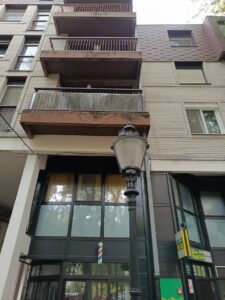How are sustainable building technologies implemented in Subotica?
Subotica, a picturesque city in northern Serbia, is increasingly embracing sustainable building technologies as part of its commitment to environmental stewardship and urban development. With a rich architectural heritage and a growing population, the city faces the dual challenge of preserving its historical character while accommodating modern needs. Sustainable building technologies offer a pathway to achieving this balance, promoting energy efficiency, reducing carbon footprints, and enhancing the quality of life for residents. This article explores how these technologies are being implemented in Subotica, highlighting key initiatives, community involvement, and the challenges faced along the way.
Government Initiatives and Policies
The local government of Subotica has recognized the importance of sustainable building practices and has begun to implement policies that encourage their adoption. One of the primary strategies has been the integration of sustainability criteria into urban planning regulations. This includes incentives for developers who incorporate green technologies, such as solar panels, rainwater harvesting systems, and energy-efficient materials in their projects. By establishing a framework that prioritizes sustainability, the city aims to foster a culture of environmental responsibility among builders and homeowners alike.
In addition to regulatory measures, Subotica has also sought partnerships with various organizations and NGOs focused on sustainability. These collaborations have led to the development of educational programs aimed at raising awareness about the benefits of green building practices. Workshops and seminars are regularly held to inform architects, builders, and the general public about the latest sustainable technologies and their potential impact on energy consumption and environmental preservation. This proactive approach not only enhances knowledge but also encourages community engagement in sustainable development initiatives.
Furthermore, the city has begun to invest in pilot projects that showcase sustainable building technologies in action. These projects serve as tangible examples of how green practices can be successfully integrated into both new constructions and renovations of existing buildings. By demonstrating the feasibility and advantages of sustainable technologies, Subotica is paving the way for broader adoption across the community, ultimately contributing to a more sustainable urban environment.
Community Engagement and Awareness
Community involvement is a crucial component of implementing sustainable building technologies in Subotica. Local residents are increasingly becoming advocates for green practices, driven by a growing awareness of environmental issues and the benefits of sustainability. Grassroots movements and community organizations have emerged, pushing for more eco-friendly building practices and demanding that local authorities prioritize sustainability in urban planning. This shift in public sentiment has prompted the city to take a more inclusive approach, inviting community input in the decision-making process regarding new developments.
Educational initiatives have played a significant role in fostering this community engagement. Schools and universities in Subotica have begun to incorporate sustainability into their curricula, teaching students about the importance of energy efficiency, waste reduction, and sustainable resource management. By instilling these values in the younger generation, the city is nurturing a culture of sustainability that is likely to persist in the long term. Community workshops and public forums also provide platforms for residents to share their ideas and concerns, ensuring that sustainable building practices reflect the needs and desires of the population.
Moreover, local businesses are increasingly recognizing the economic benefits of sustainable building technologies. Many entrepreneurs are investing in green renovations and energy-efficient upgrades to attract environmentally conscious consumers. This trend not only supports the local economy but also reinforces the community’s commitment to sustainability. As more businesses adopt green practices, they contribute to a collective effort that enhances Subotica’s reputation as a forward-thinking city dedicated to environmental responsibility.
Challenges and Future Prospects
Despite the positive strides made in implementing sustainable building technologies, Subotica faces several challenges that could hinder progress. One significant obstacle is the financial barrier associated with adopting green technologies. Many developers and homeowners are deterred by the initial costs of sustainable materials and systems, despite the long-term savings they may provide. To address this issue, the local government is exploring options for financial incentives, such as grants or low-interest loans, to make sustainable building practices more accessible to a broader audience.
Another challenge is the need for skilled labor trained in sustainable construction techniques. As the demand for green buildings increases, so does the necessity for a workforce equipped with the knowledge and skills to implement these technologies effectively. Subotica’s educational institutions are beginning to respond by offering specialized training programs in sustainable architecture and construction, but there is still a long way to go. Bridging this skills gap will be essential for the successful implementation of sustainable building practices in the city.
Looking ahead, the future of sustainable building technologies in Subotica appears promising. With continued government support, community engagement, and a growing awareness of environmental issues, the city is well-positioned to become a leader in sustainable urban development. As more projects are completed and the benefits of green building become evident, it is likely that Subotica will inspire other cities in the region to follow suit, creating a ripple effect that promotes sustainability across the broader landscape.
In conclusion, Subotica’s journey toward implementing sustainable building technologies reflects a broader global movement toward environmental responsibility and urban resilience. Through government initiatives, community engagement, and educational efforts, the city is making significant strides in promoting green practices. While challenges remain, the commitment to sustainability is evident in the actions taken by local authorities, businesses, and residents alike. As Subotica continues to embrace sustainable building technologies, it sets a powerful example for other cities, demonstrating that a harmonious balance between development and environmental stewardship is not only possible but essential for a sustainable future.


